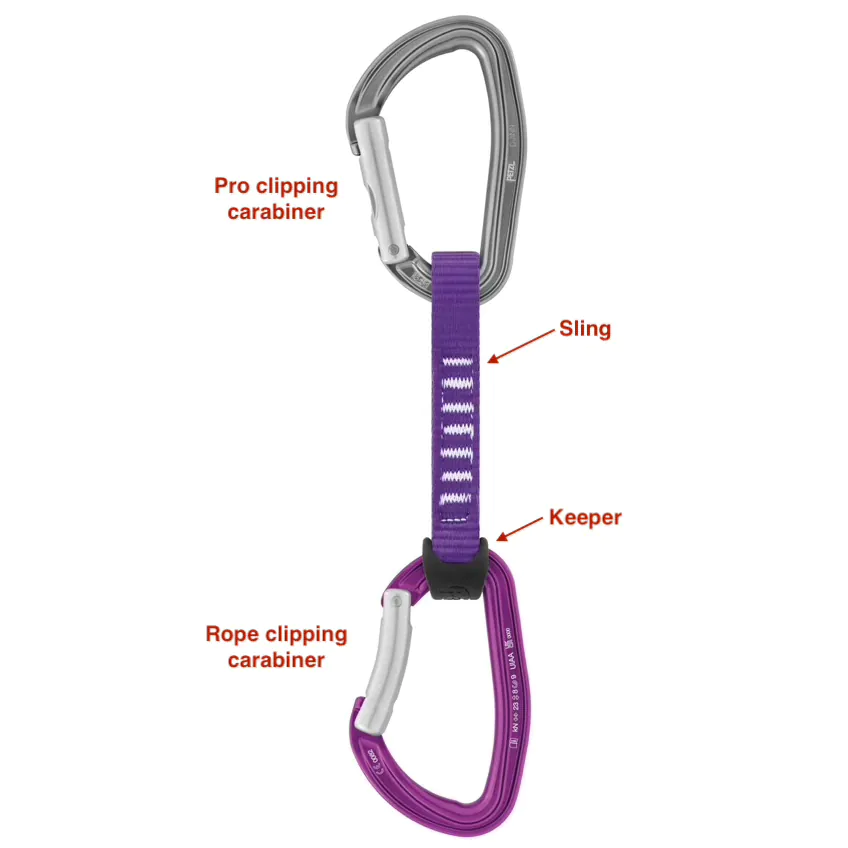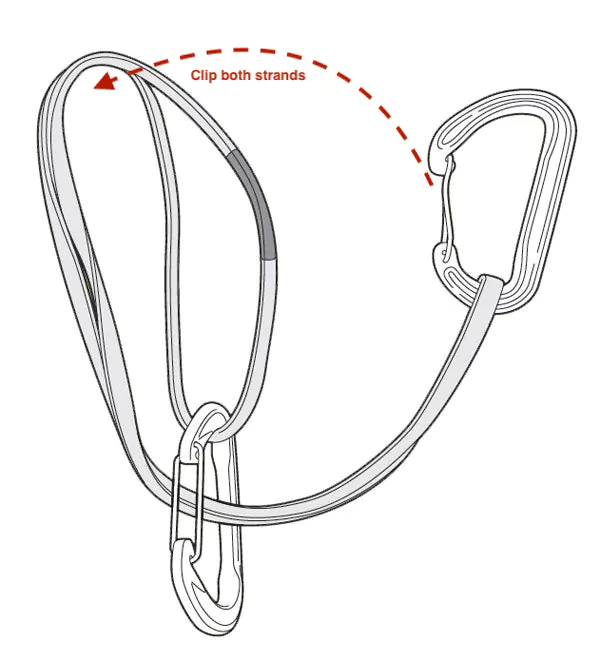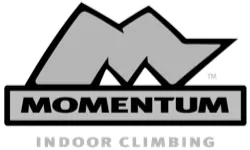Quickdraws
What is it?
The primary function of the quickdraw is to allow the climber to attach the rope to pieces of protection (pro) when lead climbing. Climbs often follow a deviating line. The skillful climber uses quickdraws of different lengths to help keep the path of the ropes straight, avoiding sharp changes in rope direction. Doing so reduces friction, which means less rope drag and more fluid climbing movement.
Quickdraw consists of two carabiners connected by a sling (a.k.a. dogbone), and, depending on their purpose, differ slightly in variations of these components. A rubber keeper, which holds the bottom carabiner in position, makes clipping the rope easier, and prevents the carabiner from spinning and cross loading.

Trad climbing quickdraws
In trad climbing a smooth running rope prevents protection from being pulled upwards and out of good placements. A freely running rope also leads to a lower load force on the top protection piece. For trad climbing then, a variety of different quickdraw lengths is useful, the majority being around 20cm in length.
For longer pitches on deviating terrain, a large number of quickdraws may be needed, leading to the need to reduce weight by using wiregate carabiners and thin Dyneema slings.

Sport climbing quickdraws
For sport climbing, the features needed for the ideal quickdraw are slightly different. Ease of clipping becomes a priority, and durability is important because there will be lots of falls and lots of lowering off on the quickdraws.
Wide nylon tape for the sling is handy, as this is easier to hold when grabbing the quickdraw when working a route. The rope clipping karabiner should ideally have a bent-gate for easier clipping, and a wide radius where the rope runs in a fall will be much kinder to the rope than a thin one.

Alpine quickdraws
For trad climbing, and even more so in winter, ice climbing and alpinism in general, longer quickdraws become useful to keep the rope path straight and smooth despite a migrating route which may weave across a face.
This is possible by using alpine quickdraws, which can be made up in advance (or bought) from a 60cm sling and two carabiners. These quickdraws can be used as normal 20cm quickdraws but easily extend to triple length when a longer extension is needed.

